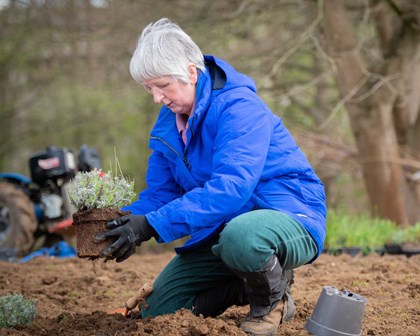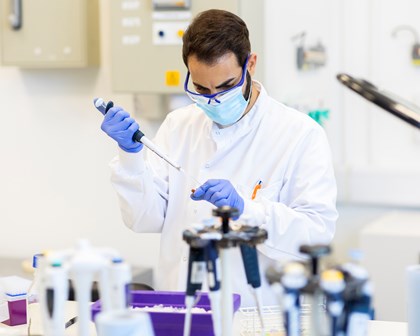Our sustainability goals and targets

As a global biopharma leader, we want to play our full part in protecting and restoring the planet’s health, in order to protect and improve people’s health. Improving the environmental sustainability of our business makes us more resilient, so we can deliver the products that patients rely on.
Scientific evidence is increasingly demonstrating how climate change and nature loss are impacting the world and human health. For example, human health is under threat from air pollution, diseases that pass from animals to humans and threats to water security. Climate and nature changes are testing the resiliency of healthcare systems.
As a global biopharma leader, addressing our environmental impact is fundamental to our purpose. That’s why we have set ambitious climate and nature targets.
Net zero impact on climate
Our climate action targetsTo deliver our goal to have a net zero impact on climate, we have set the following targets:
- 100% imported renewable electricity by 2025 and 100% renewable electricity (imported and generated) by 2030 (Scope 2)
- 80% absolute reduction in greenhouse gas emissions1 from a 2020 baseline, across all scopes2 and investment in nature-based solutions for the remaining 20% of our footprint by 2030
- Net zero greenhouse gas emissions across our full value chain by 2045: 90% absolute reduction in emissions from a 2020 baseline, across all scopes and all residual emissions neutralised.
The Science Based Target initiative (SBTi) has approved GSK’s net zero target for 2045 in line with their Corporate Net-Zero Standard, the world’s only framework for corporate net-zero target setting in line with climate science.
1 Previously stated as net zero by 2030
2 This is a new longer-term target, aligned to the SBTi Net-Zero Standard definition of net zero
Contributing to nature positive world
Our nature action targetsFreshwater
- 100% of our sites to achieve good water stewardship by 2025 and reduce overall water use by 20% by 2030
- Water neutral in operations and with key suppliers in water-stressed regions by 2030
- Zero impact active pharmaceutical ingredient levels1 for all sites and key suppliers by 2030*
Land
- Positive impact on biodiversity at all sites2 by 2030
- 100% of agricultural and forestry derived materials sustainably sourced and deforestation free by 20303*
Oceans
- 100% of marine-derived materials sustainably sourced by 2030
Atmosphere
- 100% renewable electricity by 2025 (Scope 2)*
- 80% reduction in carbon emissions across our full value chain by 2030*
- Net zero carbon emissions across our full value chain by 2045*
Waste and materials
- Zero operational waste4, including eliminating single use plastics5 by 2030*
- 10% waste reduction from supply chain by 2030
- 25% environmental impact reduction for our products and packaging by 2030
1 Below the predicted no-effect level
2 GSK-owned sites
3 Target updated in December 2021 to reflect priority materials
4 Including a 20% reduction in routine hazardous and non-hazardous waste
5 Where regulatory obligations allow, and excluding plastics which are critical to product discovery and development and health & safety
* Linked with the remuneration of our senior leaders
Reporting
We report progress against these underlying targets and goals on an annual basis, disclosed as part of our Annual Report and ESG reporting

Find out about our sustainability focus areas
What sustainability means for GSK
Delivering our sustainability targets is not just important for planetary and human health. It’s important for us as a business in terms of supporting growth, mitigating risk and getting ahead of legislation.
As countries around the world commit to low carbon healthcare systems, we are seeing increasing demand from customers, healthcare practitioners and patients for sustainable products. We understand this is an issue that many of our people are passionate about.
We are GSK
Meet some of the remarkable GSK people working to have a positive impact for patients and the planet.
More on our sustainability commitments
GSK Sustainable Sourcing Standards (PDF - 880KB)
Understanding Impact And Dependencies On Nature (PDF - 4.8MB)
GSK Sustainability And Global Health Update At COP27 (PDF - 100.6KB)
Sharing our journey to net zero and nature positive for a healthier future (PDF - 924.3KB)







